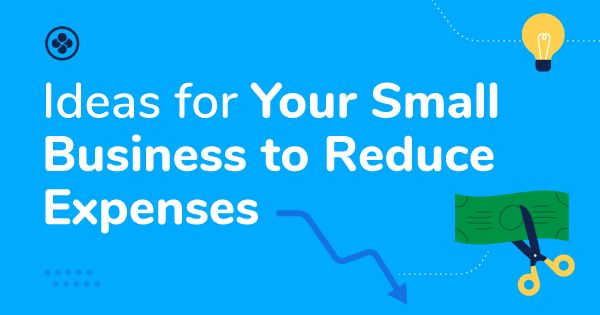Everything Small Businesses Need to Know about the Cares Act 2020

As the coronavirus outbreak spreads in the United States, we’re all feeling its effects on daily life and the economy. Individuals and small businesses have been hit particularly hard by mandatory closures and widespread safety measures enacted by local, state, and federal governments in an effort to slow the transmission of COVID-19.
Thankfully, there’s a growing number of resources and relief programs rolling out every day to help provide assistance as this pandemic grows. The largest and most widespread relief comes in the form of the Coronavirus Aid, Relief, and Economic Security Act, aka the CARES Act.
The CARES Act is a stimulus package that was introduced on January 24th, 2020, and signed into law on March 27th, 2020. Its $2 trillion size is unprecedented in both scope and magnitude as the largest-ever economic stimulus package enacted in United States history.
At a high level, the $2 trillion package includes direct payments to American citizens, enhanced unemployment insurance, loans to businesses, and increased healthcare resources. Here’s a closer look at the details and how they may affect you:
Individual Benefits & Eligibility Summary
On an individual basis, the CARES Act will provide one-time direct payments of the following:
- Up to $1,200 to individuals making less than $99,000, phasing out for incomes above $75,000
- Up to $2,400 for married couples making less than $198,000, phasing out for incomes above $150,000
- $500 for each child
The government will determine payment eligibility based on 2019 tax returns for those who have already filed them and 2018 returns for those who have not.
As the virus spreads, we’re seeing widespread layoffs, especially in hard-hit industries like foodservice, hospitality, retail, travel, and many more. The CARES Act will also:
- Boost unemployment insurance provisions by adding $600 per week on top of what beneficiaries would normally receive from states for up to four months.
- Expand the benefit to independent contractors and self-employed citizens.
- Require group health plans and insurance providers to cover any preventative services related to COVID-19 without cost-sharing.
- Suspend federal student loan payments through September 30th, 2020, with no accrual of interest on these loans.
CARES Act Impact On Big Businesses
A $500 billion pool is set aside to provide loans, loan guarantees, or investments in businesses and state municipalities damaged by the crisis. Here’s a breakdown by major industry:
- Airline industry – $25 billion in grants, exclusively for employee wages, salaries, and benefits, and an additional $25 billion for loans and loan guarantees
- Cargo carriers – $4 billion in grants, exclusively for employee wages, salaries, and benefits, and an additional $4 billion for loans and loan guarantees
- Hospitals and veteran care – $117 billion in grants
- Another $16 billion will go to grow the national stockpile of medical and pharmaceutical supplies.
CARES Act Impact On Small Businesses
An additional $350 billion in loans is available for small businesses, with a max loan of $10 million, to cover:
- Payroll support including paid sick leave and paid medical leave
- Employee salaries up to $100,000
- Rent, mortgage, and utility payments
- Insurance premiums
- Other debt obligations
The loan program is called the Paycheck Protection Program (PPP) and is designed for companies with 500 or fewer employees to cover costs through an eight week period immediately following the loan disbursement. The $10 million dollar loan cap comes with an interest rate of no more than 4% annually. Payments on the loan can be deferred for at least six months and up to a year without penalty. Here’s the application schedule:
- April 3rd, 2020: Small businesses and sole proprietorships
- April 10th, 2020: Independent contractors and self-employed individuals
You can apply with SBA Form 2483 at existing SBA lenders, federally insured depository institutions, federally insured credit unions, or participating farm credit systems. Visit the SBA website for a list of approved lenders. The amount received is determined by multiplying 2.5 by the average total monthly payments for payroll costs during the one year period prior to the loan.
Emergency Economic Injury Grants are also available alongside Economic Injury Disaster Loans (EIDL). Those eligible for these grants and loans include:
- Companies with 500 or fewer employees
- Sole proprietorships
- Independent contractors
- Cooperatives
- Tribal businesses
- Employee-owned businesses
You can apply for the Emergency Economic Injury Grant, Economic Injury Disaster Loan, and PPP loan at the same time, but you cannot use your EIDL for the same purpose as your PPP loan.
The EIDL represents a lower interest rate loan for up to $2 million of expenses that could have been met had the pandemic not occurred. The Economic Injury Grants are available within three days of submitting the application for up to $10,000 for entities found eligible. The loans and grants are available until December 31st, 2020. You can apply here on the SBA Disaster Assistance page.
Companies forced to suspend operations or that have gross receipts decline by 50% from the previous year will receive:
- A tax credit for retaining employees worth up to 50% of the wages paid during this crisis
- A delay on payroll taxes due for employers that require half of the deferred tax paid by the end of 2021 and the last half by the end of 2022.
The CARES Act also bans companies that take government loans from buying back stock until one year after the loan is paid back. It bars executives and employees who made $425,000 or more last year from getting a raise. It also stops the president, vice president, heads of executive departments, members of congress, and their families from receiving any emergency taxpayer relief.
The bill passed on March 27th, 2020, including the massive $2 trillion CARES Act, is phase three of the COVID-19 relief plan, and many leaders are already looking at phase four which could include stronger protections for workers, increase funding for food security programs, and provide greater support for local and state governments.
We have no way of knowing how this will pan out, nor can we count on a phase four of relief. The time is now for American small business owners and entrepreneurs to take advantage of the stimulus money provided by the CARES Act.
If you’d like to dig into the details, you can read the details of the final bill passed. For further information on the CARES Act and how it affects specific industries, check out these resources:
- National Restaurant Association
- National Retail Federation
- International Franchise Association
- American Hotel & Lodging Association
- American Public Transportation Association
- American Gaming Association
While you wait for funding, continue to follow guidelines from the Centers for Disease Control, track the spread of COVID-19 via the Johns Hopkins Case Map, and wash your hands.
Know of any other resources that may help entrepreneurs and small business owners in these uncertain times? Share them in the comments below:
JD enjoys teaching people how to use ZoomShift to save time spent on scheduling. He’s curious, likes learning new things everyday and playing the guitar (although it’s a work in progress).



